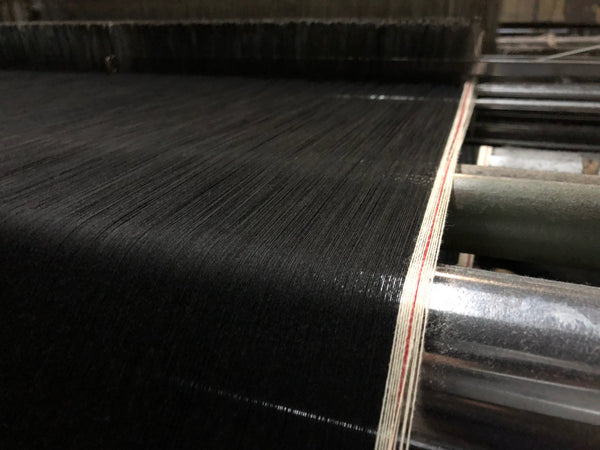
Denim only started finding its way into Japanese fashion during the mid-20th century, after the Second World War when the American Occupation of Japan ushered waves of interest in American fashion and pop culture. Thus the United States, where denim was first made and popularized in the form of jeans, is home to a longer historical background of denim fashion than is Japan.Surprisingly, denim jeans produced in Japan today can boast qualities that make them distinct, if not superior, counterparts to those produced in the United States. Denim made in Japan no longer simply constitutes “American clothing in another country,” – it has grown to embody exclusive traditions in its dye and weaving.

Dyed by hand (Hank Dyed) with coloring naturally sourced from the Japanese indigo plant (AI), the finest Japanese denim are crafts of Japan’s own, because they incorporate methods from ancient times. Records of indigo plant cultivation date to the 7th century, around which time Japanese artisans learned to extract deep, dark shades of blue using those plants. In Japan, indigo dye was initially used only for clothing worn by aristocrats and samurai. However, by the 17th century, still two centuries before the United States would see its first pair of denim jeans, Japanese indigo dye had already been popularized to dye household fabrics for the common people: including kimono and hand towels. Today, unique to many premium denim products made in Japan’s Okayama Prefecture—the Mecca of Denim Jeans—is this characteristic Japanese indigo, passed down through the generations. Denim as a fashion concept may be imported to Japan, but premium Japanese denim is storied garment in itself.

Additionally, when the United States mostly abandoned its shuttle loom denim-weaving techniques of pre-WWII, Japan embraced, developed, and eventually used them to make distinguished denim products. In the 1950s, due to the demands of globalization and mass production, almost all denim mills in the U.S. chose to abandon their shuttle looms in favor of projectile looms, which produced significantly more denim at much higher speeds. Doing so lowered production costs, but also compromised nuanced qualities. Specifically, unlike shuttle looms, projectile looms did not weave denim with continuous strands of yarn that created denim fabric with tidy, self-sealed edges (selvedge denim). Instead, they wove denim by shooting individual, unconnected strands of denim, producing denim fabric with edges that are frayed. Thus, jeans began to require stitching to accommodate this untidiness, which grew to mark virtually every single pair of jeans in Japan and elsewhere. It was not until the late 1970s when enthusiasts began to revive vintage production, reintroducing denim garments as a superior product from a foregone era. Notably, when this revival occurred, it started not in the United States, but instead in Osaka, Japan. With the earliest beginning in 1979 (Studio D’Artisan), five brave companies (the Osaka Five) began re-adopting vintage weaving methods to craft the selvedge denim jeans that had almost been forgotten by the masses. The efforts of the Osaka Five inspired other regional denim makers to not only rediscover selvedge denim, but also eventually pioneer new styles, dyes, and techniques in selvedge denim that the United States had yet to see. While the United States has seen it’s number of denim mills unfortunately shrinking (i.e. Cone Mills’ recent demise), the Japanese denim industry is still resilient.

As such, Japan has transformed from follower into leader of denim fashion. Now the global hub of selvedge denim, Japan no longer solely mimics the premium Selvedge that the USA first invented, but has grown and developed as an innovator in this field of fashion. For enthusiasts who seek artisan creations that manifest innovation as much as class, and embody a Japanese aesthetic as much as Americana – you’ve found your home.
*Researched & Written by Okayama Denim Intern, William Shia




Lawrence
February 03, 2025
the indigo dye is from plants,berries,roots? how and where did the blue come from?